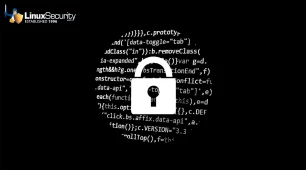SuSE: 2010-002: IBM Java 5 Security Update
Summary
-----BEGIN PGP SIGNED MESSAGE-----
Hash: SHA1
______________________________________________________________________________
SUSE Security Announcement
Package: java-1_5_0-ibm
Announcement ID: SUSE-SA:2010:002
Date: Tue, 12 Jan 2010 08:00:00 +0000
Affected Products: SUSE SLES 9
Open Enterprise Server
Novell Linux POS 9
SUSE Linux Enterprise Desktop 10 SP2
SUSE Linux Enterprise Desktop 10 SP3
SUSE Linux Enterprise Server 10 SP2
SUSE Linux Enterprise Server 10 SP3
Vulnerability Type: remote code execution
CVSS v2 Base Score: 9.3 (AV:N/AC:M/Au:N/C:C/I:C/A:C)
SUSE Default Package: yes
Cross-References: CVE-2009-2493, CVE-2009-3867, CVE-2009-3868
CVE-2009-3869, CVE-2009-3871, CVE-2009-3872
CVE-2009-3873, CVE-2009-3874, CVE-2009-3875
CVE-2009-3876, CVE-2009-3877
Content of This Advisory:
1) Security Vulnerability Resolved:
IBM Java 5 security update
Problem Description
2) Solution or Work-Around
3) Special Instructions and Notes
4) Package Location and Checksums
5) Pending Vulnerabilities, Solutions, and Work-Arounds:
See SUSE Security Summary Report.
6) Authenticity Verification and Additional Information
______________________________________________________________________________
1) Problem Description and Brief Discussion
IBM Java 5 was updated to Service Refresh 11. It fixes lots of bugs
and security issues.
This included a timezone update to 1.6.9s (with the latest Fiji change).
CVE-2009-3876 / CVE-2009-3877: A vulnerability in the Java Runtime
Environment with decoding DER encoded data might allow a remote client
to cause the JRE to crash, resulting in a denial of service condition.
CVE-2009-3867: A buffer overflow vulnerability in the Java Runtime
Environment audio system might allow an untrusted applet or Java Web
Start application to escalate privileges. For example, an untrusted
applet might grant itself permissions to read and write local files,
or run local applications that are accessible to the user running
the untrusted applet.
CVE-2009-3868: A buffer overflow vulnerability in the Java Runtime
Environment with parsing image files might allow an untrusted applet
or Java Web Start application to escalate privileges. For example,
an untrusted applet might grant itself permissions to read and write
local files, or run local applications that are accessible to the
user running the untrusted applet.
CVE-2009-3872: An integer overflow vulnerability in the Java Runtime
Environment with reading JPEG files might allow an untrusted applet
or Java Web Start application to escalate privileges. For example,
an untrusted applet might grant itself permissions to read and write
local files, or run local applications that are accessible to the
user running the untrusted applet.
CVE-2009-3873: A buffer overflow vulnerability in the Java Runtime
Environment with processing JPEG files might allow an untrusted applet
or Java Web Start application to escalate privileges. For example,
an untrusted applet might grant itself permissions to read and write
local files, or run local applications that are accessible to the
user running the untrusted applet.
CVE-2009-3875: A security vulnerability in the Java Runtime
Environment with verifying HMAC digests might allow authentication to
be bypassed. This action can allow a user to forge a digital signature
that would be accepted as valid. Applications that validate HMAC-based
digital signatures might be vulnerable to this type of attack.
CVE-2009-3869: A buffer overflow vulnerability in the Java Runtime
Environment with processing image files might allow an untrusted applet
or Java Web Start application to escalate privileges. For example,
an untrusted applet might grant itself permissions to read and write
local files or run local applications that are accessible to the user
running the untrusted applet.
CVE-2009-3871: A buffer overflow vulnerability in the Java Runtime
Environment with processing image files might allow an untrusted applet
or Java Web Start application to escalate privileges. For example,
an untrusted applet might grant itself permissions to read and write
local files or run local applications that are accessible to the user
running the untrusted applet.
CVE-2009-3874: An integer overflow vulnerability in the Java Runtime
Environment with processing JPEG images might allow an untrusted applet
or Java Web Start application to escalate privileges. For example,
an untrusted applet might grant itself permissions to read and write
local files or run local applications that are accessible to the user
running the untrusted applet.
CVE-2009-2493: The Java Runtime Environment includes the Java Web
Start technology that uses the Java Web Start ActiveX control to
launch Java Web Start in Internet Explorer. A security vulnerability
in the Active Template Library (ATL) in various releases of Microsoft
Visual Studio, which is used by the Java Web Start ActiveX control,
might allow the Java Web Start ActiveX control to be leveraged to
run arbitrary code. This might occur as the result of a user of the
Java Runtime Environment viewing a specially crafted web page that
exploits this vulnerability.
Please also see https://www.ibm.com/support/pages/java-sdk/
2) Solution or Work-Around
There is no known workaround, please install the update packages.
3) Special Instructions and Notes
Please close and restart all running instances of IBM Java after the update.
4) Package Location and Checksums
The preferred method for installing security updates is to use the YaST
Online Update (YOU) tool. YOU detects which updates are required and
automatically performs the necessary steps to verify and install them.
Alternatively, download the update packages for your distribution manually
and verify their integrity by the methods listed in Section 6 of this
announcement. Then install the packages using the command
rpm -Fhv
References





















